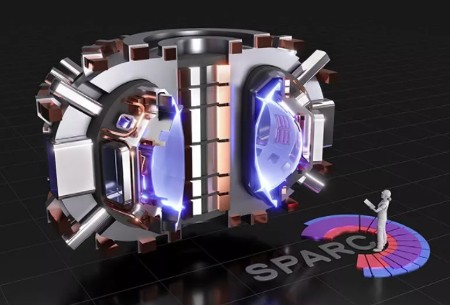In Part 1 of this two-part series on the reasons we need nuclear power in the mix as we move to a zero-carbon energy future, I talked about modular microreactors using fission technology. In Part 2 we look at fusion reactors.
Last year I read an article that forecasted 2025 as the year for the arrival of the first commercially viable fusion reactor. I thought, how could that be when every time fusion reactors come up in the news it seems that commercial versions still lie decades ahead.
Nuclear fusion as opposed to fission is very attractive if we can pull it off. Why? Because a mere 30 grams (one ounce) of the fuel used for fusion reactors produce the energy equivalent of 9,000 litres (304,000 ounces) of heating oil. That’s a 304,000:1 payback which makes the quest to harness this technology a worthwhile endeavour. Then add two other benefits that put fusion well ahead of fission: the former produces zero radioactive waste, and it will never in an accident lead to a meltdown such as occurred at Chernobyl and Fukushima. Instead, the fusion reaction will just die.
The technical and material problems, however, remain significant. These include:
- the need to create a stable magnetic field that can endure and be maintained for a sustained period that can contain a gas plasma heated to 150,000,000 degrees Celsius (270,000,000 degrees Fahrenheit).
- the need to produce more energy output than input. At best today, experimental fusion technology produces marginal positive output but nothing to write home about.
- the need to source supplies of tritium and other materials needed in fusion reactors. Some of these materials are not naturally occurring in the real world. For example, tritium is so rare that today most of what is in use is produced by existing fission reactors. In the future fusion reactors may be able to produce their own material requirements by the very nature of the chemistry and physics within them (the fusing of atoms to create new elements).
Fusion reactor design has been a challenge. The most common model has been the doughnut-shaped vessel called a tokamak. The European Union is the home of the ITER, a tokamak that when it finally gets working will produce between 2,000 to 4,000 megawatts of power.
The tokamak isn’t the only concept design on the market. For example:
- A Vancouver company backed by Jeff Bezos is developing magnetized target fusion.
- A California company is pursuing a design called Norman, combining particle accelerator technology with plasma physics.
- Another backed by Peter Thiel is developing something called the Fusion Engine, a thousand times smaller, and 500 times cheaper than the competition.
- Lockheed-Martin skunkworks is tinkering with a truck-sized fusion reactor for portability.
- And an Oxford, UK-based company, Tokamak Energy, is building a reactor called the ST40, a miniature version of the ITER.
Not to be outdone by commercial enterprises, universities and research institutes are also in the race to perfect fusion reactors. For example:
- The University of Illinois at Urbana-Champaign and University of Chile, are working together on a project they call the Quantum Controlled Fusion reactor using laser pulses.
- The Laser Inertial Fusion Energy (LIFE) reactor is being developed at the Lawrence Livermore National Laboratory.
- The University of Washington’s Spheromak is a plasma nuclear reactor that its developers say can produce a billion watts of surplus power output at a cost less than the building and operating of a single coal-fired power plant.
- Two competing designs are vying each other from the engineers at the Massachusetts Institute of Technology (MIT). The first is the Alcator C-Mod reactor that uses deuterium, hydrogen and a pinch of helium-3 as fuel, and the second is the SPARC (Smallest Private-Funded Affordable Robust Compact) reactor, designed to achieve sufficient heat to keep a fusion reaction going without requiring external energy input. The SPARC project team claims it will have a finished product by 2025.
- The Max Planck Institute in Germany has been building and provided proof-of-concept for a very different fusion reactor design called the Stellarator. The current version is called the Wendelstein 7-X.
So it would seem we have both a commercial and academic fusion reactor arms race on the go that could allow us to transition away from carbon-generated energy even faster than previously estimated. Where ITER had set a 2040 target date, these competing designs appear to be a decade ahead or better which is encouraging news. With nuclear fusion added to the mix, the intermittency issues of renewables like solar and wind no longer pose a problem for our clean energy future.










[…] in academic and business circles, developing fusion reactors, are closer to the deployment of several commercial designs that hold promise to provide […]